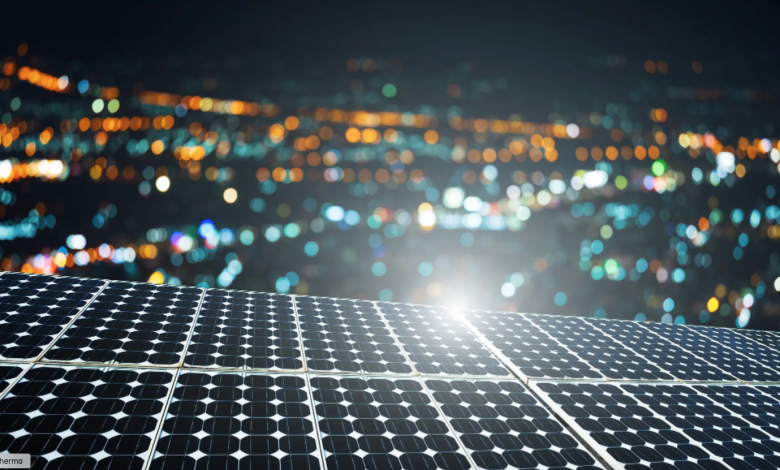Anti-solar Photovoltaic cells, to produce energy even at night
New anti solar photovoltaic cells offer a night power of 50mw/m2
(Sustainabilityenvironment.com) – Anti solar Photovoltaic cells can generate energy from the sun during the day and “reverse” the operation at night to continue to produce electricity. A curious concept but one that industry research has been focusing on for some time. The term “anti-solar” was jokingly coined in 2020 by a group of Stanford scientists, but it well embodies the new technological concept. The idea behind it is to integrate traditional photovoltaic technology with a thermoelectric generator (TEG) based on radiative cooling at night. This is a phenomenon by which a body – favored by certain conditions of clear skies and low humidity – is able to “expel” significant amounts of heat into deep space, in the form of infrared light. This heat flux can be directly exploited to generate electricity through TEGs.
At night, in fact, even photovoltaic cells radiate thermal energy to the sky, reaching temperatures lower than some degrees of the surrounding air. By integrating a thermoelectric module into the panels, it is possible to generate a voltage (and therefore current) from the temperature gradient created between the cell and air. As long as you have properly designed the system on both the hot and cold sides.
New advances for night PV cells
The latest advances in this field always come from Stanford University. Here a group of engineers, including the researcher Shanhui Fan who had participated in the 2020 study, realized a new prototype of anti solar cells. “What we were able to do was build everything with standard components, making a very good thermal contact,” said Zunaid Omair, one of the authors of the research. “The most expensive element of the whole configuration is the thermoelectric itself”.
The point of arrival for this technology is to be able to generate at least 1 watt per square meter. But even though it has been theoretically proven that it can achieve even greater powers, Stanford’s device currently provides only 50 milliwatts per square meter. Value too low even if it doubles the previous results achieved.
“None of these components were specifically designed for this purpose,” Shanhui Fan pointed out. “So, I think there is room for improvement. In the sense that, if you really designed each of these components for our purpose, the performances could increase.” The study appeared in Applied Physics Letters.






